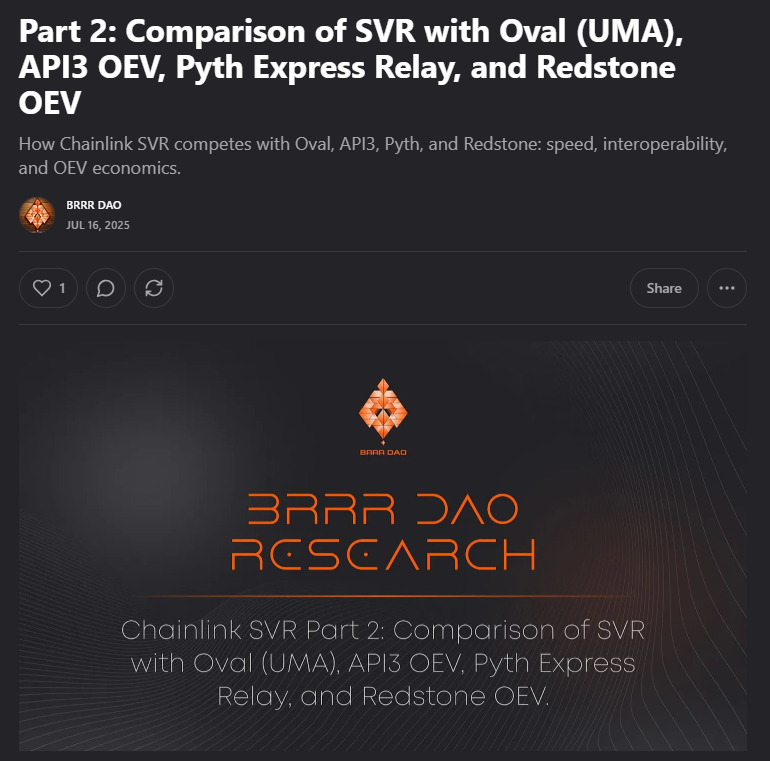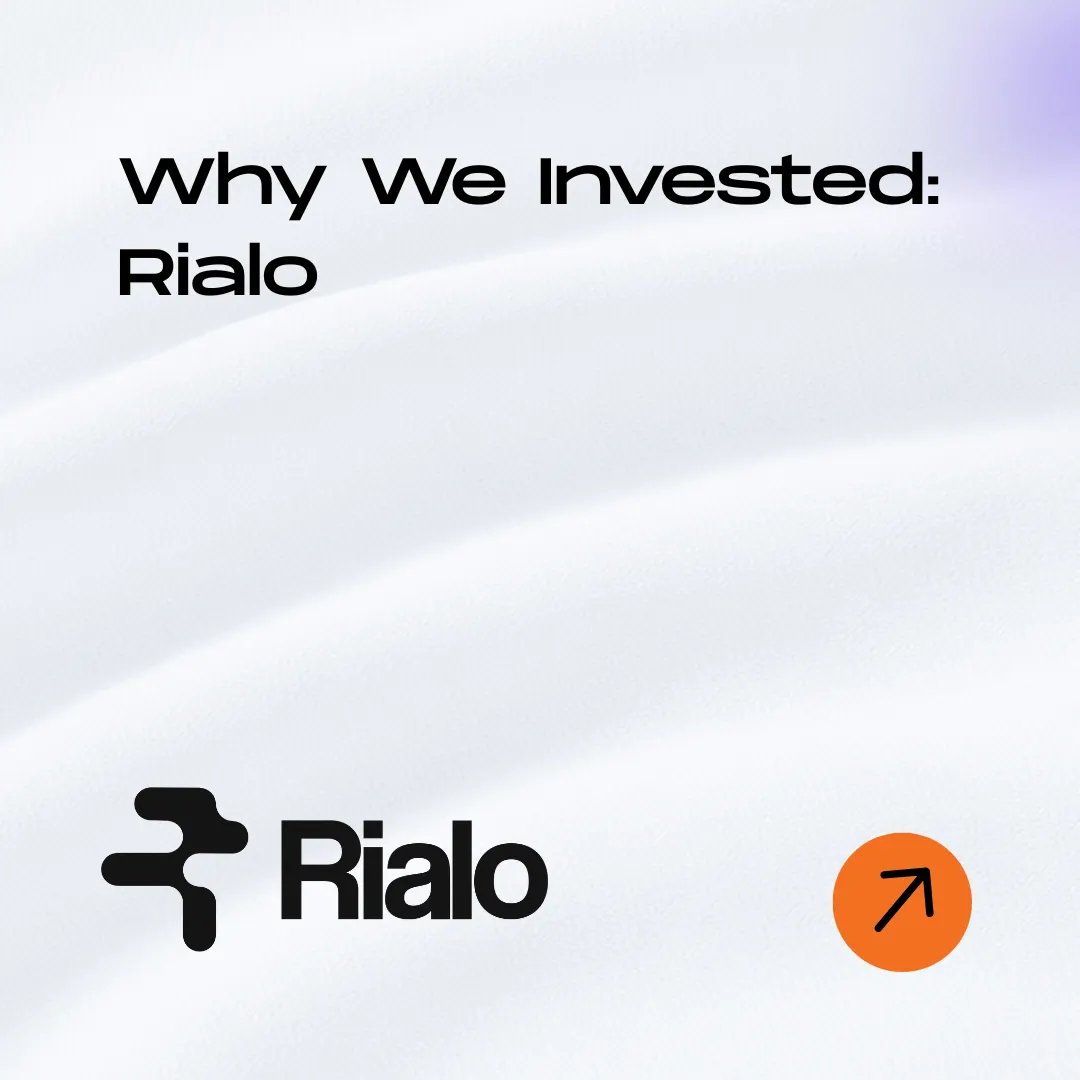This token isn’t available on the OKX Exchange. You can trade it on OKX DEX instead.

UMA
Uma Musume price

8S9Dim...bonk
$0.0018494
+$0.0012624
(+215.04%)
Price change for the last 24 hours
USD
We can’t find that one.
Check your spelling or try another.
Check your spelling or try another.
How are you feeling about UMA today?
Share your sentiments here by giving a thumbs up if you’re feeling bullish about the coin or a thumbs down if you’re feeling bearish.
Vote to view results
UMA market info
Market cap
Market cap is calculated by multiplying the circulating supply of a coin with its latest price.
Market cap = Circulating supply × Last price
Market cap = Circulating supply × Last price
Network
Underlying blockchain that supports secure, decentralized transactions.
Circulating supply
Total amount of a coin that is publicly available on the market.
Liquidity
Liquidity is the ease of buying/selling a coin on DEX. The higher the liquidity, the easier it is to complete a transaction.
Market cap
$1.85M
Network
Solana
Circulating supply
999,856,019 UMA
Token holders
772
Liquidity
$195.11K
1h volume
$63.02K
4h volume
$442.84K
24h volume
$1.69M
Uma Musume Feed
The following content is sourced from .

🚀 NEW EPISODE 🚀
Optimistic Oracles & Intent-Based Bridges for Unifying Ethereum
@tw_tter chats with @hal2001, co-founder of @UMAprotocol & @AcrossProtocol, about his journey from UMA's synthetic assets & next-gen optimistic oracle, to attempting to unify Ethereum’s ecosystem through Across’ intent-based bridge.
Universal Market Access (@UMAprotocol) envisioned a world in which global markets were universally accessible through financial smart contracts that used synthetic assets on Ethereum. However, this was taking place long before the massive boom of DeFi summer of 2020.
As a result, @UMAprotocol shifted to building an optimistic oracle to power prediction markets as a decentralised ‘truth machine’, thus expanding oracle use cases. Through game theoretic models, UMA managed to properly incentivise its token holders to act as voters, rewarding them for good predictions & disputes, and vice versa.
Later on, @hal2001 also co-founded @AcrossProtocol, an intent-based optimistic bridge that set out to create a seamless UX for unifying EVM chains. Through their solver network, Across managed to achieve fast (as low as 2 seconds) and cheap bridging, abstracting away crosschain complexities, without any security tradeoffs.
Don't forget to RT & follow @epicenterbtc!
Topics discussed in this episode:
0:00 - Introduction
3:41 - Hart’s background
5:24 - Universal Market Access, from synthetic assets to oracles
7:53 - Building Across
10:01 - UMA’s optimistic oracle
14:42 - Incentivizing voters & resolving disputes
25:56 - Dealing with invalid outcomes
32:47 - Optimistic security assumptions
34:56 - UMA x Across dual token interactions
37:37 - Across’ intent-based bridge
43:53 - Pricing mechanism & solver competition
48:07 - ZK settlement
54:54 - Bridging fragmentation
58:23 - Abstracting & unifying cross-chain bridging
1:04:46 - Bridging between rollups
1:06:55 - UMA & Across governance systems

DeFi remains stagnant, while Oracles take the lead.
As an intermediary layer between off-chain real-world assets and on-chain programmable finance, oracles occupy a superior position in the value chain. New generation DeFi platforms/protocols that integrate TradFi and Crypto, such as RWAfi, tokenized US stock trading, and tokenized trading of real-world derivative assets, all require technological updates from oracles to support them.
Although many institutions and retail investors believe that oracle technology has already entered a mature stage of its lifecycle, making it difficult to see any exciting "disruptive" innovations and the exponential growth opportunities they might bring, this does not mean that the oracle sector has become stagnant.
On the contrary, driven by new demands stimulated by the new generation of DeFi platforms/protocols, oracle sector projects are providing incremental new technological features. Everyone has shifted from competing on TVS (Total Value Secured) to TTV (Total Traded Value), and now to competing on LST, RWA, PerpDEX, tokenized US stocks, and other new scenario expansion capabilities; this sector has never been "cold."
As a project that has always been unwilling to play second fiddle, RedStone has expanded from the LST scenario to Solana RWA in 2025, and then mid-year unveiled a major innovation: the lending enhancement engine RedStone Atom, equipped with liquidation intelligence.
In my humble opinion, RedStone Atom is the MAX PRO version of the anti-OEV (oracle extractable value) functional module launched by competitors UMA and API3 in 2024.
In traditional systems, liquidation is a multi-step process: oracle updates price → liquidation bot detects liquidatable positions → submits liquidation transaction → competitive priority fee → executes liquidation.
In this process, a significant amount of value is captured by MEV bots, while also limiting the LTV threshold level for DeFi lending, thus affecting the capital efficiency of DeFi players' circular lending. For DeFi lending protocols, the main competitive trench lies in the LTV threshold and liquidation systems (liquidation efficiency, anti-OEV, etc.).
According to Dune dashboard statistics, the total scale of OEV losses exceeds $2 billion, with OEV losses from AAVE v2 and v3 on the Ethereum mainnet alone potentially exceeding $300 million.
In 2024, UMA and API3 introduced an auction mechanism inspired by Flashbot's anti-MEV mechanism. However, unfortunately, it has not been adopted by several DeFi lending protocols.
The reason is not complex and is not significantly related to business operation levels. The problem lies in the generality of their OEV modules and the integration engineering costs.
RedStone Atom combines the liquidation module with the OEV module into one, compressing the entire process into a single atomic transaction. Moreover, it supports activation on any RedStone data source and any chain without the need for code changes or engineering investment.
After integrating RedStone Atom, the liquidation process for DeFi lending protocols will be reshaped as follows:
Phase One: Off-chain price monitoring and auction initiation (<100ms)
Off-chain price monitoring → Detect liquidatable positions → Trigger FastLane Atlas auction
Phase Two: Millisecond-level sealed-window auction (<300ms)
FastLane will bring the new RedStone price flow into the off-chain auction → Liquidators bid for liquidation rewards (sealed bidding) → Atlas smart contract collects and sorts all bids → Determine the highest bidder (on-chain verification)
Phase Three: Atomic three-step execution (completed within a single block)
When the auction generates valid bids, the Atlas smart contract will package the following three operations into a single atomic transaction:
Operation 1: Push new signed oracle price → (within the same block) Operation 2: Execute liquidation → (within the same block) Operation 3: Transfer the winning amount to the designated recipient
Atomic transactions ensure that these three operations are indivisible; either all succeed or all roll back, while eliminating front-running and arbitrage opportunities and achieving zero-delay liquidation.
Given the lessons learned from the aforementioned oracle competitors, RedStone Atom has simplified the integration process for DeFi lending protocols: they only need to request RedStone to enable Atom on the data source they are using and provide an address to receive OEV profits; the remaining adaptation work will be completed by the RedStone development team.
Currently, Atom has launched on Unichain, providing security for Compound Finance, Morpho, Venus Protocol, and Upshift, and can be integrated into BNB Chain, Base, and Berachain. In the future, it will be available on Ethereum, HyperEVM, Arbitrum, and more.
The 2025 crypto market has overvalued attention, liquidity, and sentiment, while being overly insensitive to technological narratives. This period has been more challenging for teams with a technological gene than the 2022 bear market. However, long-term oriented developers represented by RedStone continue to insist on building something big. Hopefully, Mr. Market will have a reward prepared for them at some point in the future.

Recently at @BRRRDAOxyz, we dropped a comprehensive OEV analysis, comparing @Chainlink SVR with other existing solutions.
Everyone's debating revenue splits, but I don't want to talk about whether 60% beats 90%. I want to talk about why the "best" technical solution might lose anyway.
Thoughts on infrastructure wars and what the OEV competition reveals:
Everyone sees: "Oval gives 90%, SVR only 60%, obvious choice"
I see: Distribution beats optimization every time.
Look at the data:
• Chainlink SVR: 60% split, Ethereum-only, 5-block theoretical max
• Oval: 90% split, but building from scratch
• Redstone: 50/50 split, "hostile participant" assumptions
• API3: 80% split, multi-chain complexity
The revenue split paradox:
Aave chose 65% over 90%. Why?
It's not about percentage - it's about infrastructure reliability. SVR leverages battle-tested Flashbots infrastructure while competitors build new auction mechanisms.
Real performance? 95% of SVR auctions complete in 1-2 blocks. The theoretical 5-block maximum matters less than actual reliability.
Plot twist: This isn't even about OEV extraction.
SVR is Chainlink's first Payment Abstraction implementation. Converting fees to their native token. They're building a sustainable token economy.
The quiet alpha: While everyone optimizes for revenue splits, Chainlink is optimizing for ecosystem lock-in.
Second-order effects everyone's missing:
• OEV revenue correlates with market stress, not protocol adoption
• Multi-chain support = more failure points, not more value
• Network effects > technical specifications
• Ecosystem integration > pure performance metrics
The path of least resistance:
Protocols choose 60% + reliability over 90% + risk because downtime costs more than the revenue difference.
My take: Infrastructure wars aren't won by the best technology. They're won by the best distribution.
When technical differences are marginal, trust and ecosystem positioning matter more than feature comparisons.
Worth watching how many protocols follow Aave's lead vs chase higher splits.
Thoughts?

UMA price performance in USD
The current price of uma-musume is $0.0018494. Over the last 24 hours, uma-musume has increased by +215.04%. It currently has a circulating supply of 999,856,019 UMA and a maximum supply of 999,856,019 UMA, giving it a fully diluted market cap of $1.85M. The uma-musume/USD price is updated in real-time.
5m
-0.63%
1h
-8.13%
4h
+14.31%
24h
+215.04%
About Uma Musume (UMA)
UMA FAQ
What’s the current price of Uma Musume?
The current price of 1 UMA is $0.0018494, experiencing a +215.04% change in the past 24 hours.
Can I buy UMA on OKX?
No, currently UMA is unavailable on OKX. To stay updated on when UMA becomes available, sign up for notifications or follow us on social media. We’ll announce new cryptocurrency additions as soon as they’re listed.
Why does the price of UMA fluctuate?
The price of UMA fluctuates due to the global supply and demand dynamics typical of cryptocurrencies. Its short-term volatility can be attributed to significant shifts in these market forces.
How much is 1 Uma Musume worth today?
Currently, one Uma Musume is worth $0.0018494. For answers and insight into Uma Musume's price action, you're in the right place. Explore the latest Uma Musume charts and trade responsibly with OKX.
What is cryptocurrency?
Cryptocurrencies, such as Uma Musume, are digital assets that operate on a public ledger called blockchains. Learn more about coins and tokens offered on OKX and their different attributes, which includes live prices and real-time charts.
When was cryptocurrency invented?
Thanks to the 2008 financial crisis, interest in decentralized finance boomed. Bitcoin offered a novel solution by being a secure digital asset on a decentralized network. Since then, many other tokens such as Uma Musume have been created as well.
Monitor crypto prices on an exchange
Watch this video to learn about what happens when you move your money to a crypto exchange.
Disclaimer
The social content on this page ("Content"), including but not limited to tweets and statistics provided by LunarCrush, is sourced from third parties and provided "as is" for informational purposes only. OKX does not guarantee the quality or accuracy of the Content, and the Content does not represent the views of OKX. It is not intended to provide (i) investment advice or recommendation; (ii) an offer or solicitation to buy, sell or hold digital assets; or (iii) financial, accounting, legal or tax advice. Digital assets, including stablecoins and NFTs, involve a high degree of risk, can fluctuate greatly. The price and performance of the digital assets are not guaranteed and may change without notice.
OKX does not provide investment or asset recommendations. You should carefully consider whether trading or holding digital assets is suitable for you in light of your financial condition. Please consult your legal/tax/investment professional for questions about your specific circumstances. For further details, please refer to our Terms of Use and Risk Warning. By using the third-party website ("TPW"), you accept that any use of the TPW will be subject to and governed by the terms of the TPW. Unless expressly stated in writing, OKX and its affiliates (“OKX”) are not in any way associated with the owner or operator of the TPW. You agree that OKX is not responsible or liable for any loss, damage and any other consequences arising from your use of the TPW. Please be aware that using a TPW may result in a loss or diminution of your assets. Product may not be available in all jurisdictions.
OKX does not provide investment or asset recommendations. You should carefully consider whether trading or holding digital assets is suitable for you in light of your financial condition. Please consult your legal/tax/investment professional for questions about your specific circumstances. For further details, please refer to our Terms of Use and Risk Warning. By using the third-party website ("TPW"), you accept that any use of the TPW will be subject to and governed by the terms of the TPW. Unless expressly stated in writing, OKX and its affiliates (“OKX”) are not in any way associated with the owner or operator of the TPW. You agree that OKX is not responsible or liable for any loss, damage and any other consequences arising from your use of the TPW. Please be aware that using a TPW may result in a loss or diminution of your assets. Product may not be available in all jurisdictions.




























